Travel Back In Time In Naganeupseong Folk Village In Suncheon
Having visited the Naganeubseong Folk Village (순천 낙안읍성), or Nagan Folk Village, twice in the past year, it’s high time I write about this charming and very unique folk village in Korea. Considered the best preserved Korean fortress town in the country, this is absolutely something you need to see in Jeollanam-do.
Not only is it the best preserved, but it’s still active! There are 100 households with a bit over 200 residents that live in the traditional thatched roof homes in the village. It’s pretty amazing really. The town has been growing in popularity over the past few years but is still very much a hidden gem in Korea for most travelers so plan your trip before everyone else finds this charming village near Suncheon and Yeosu.
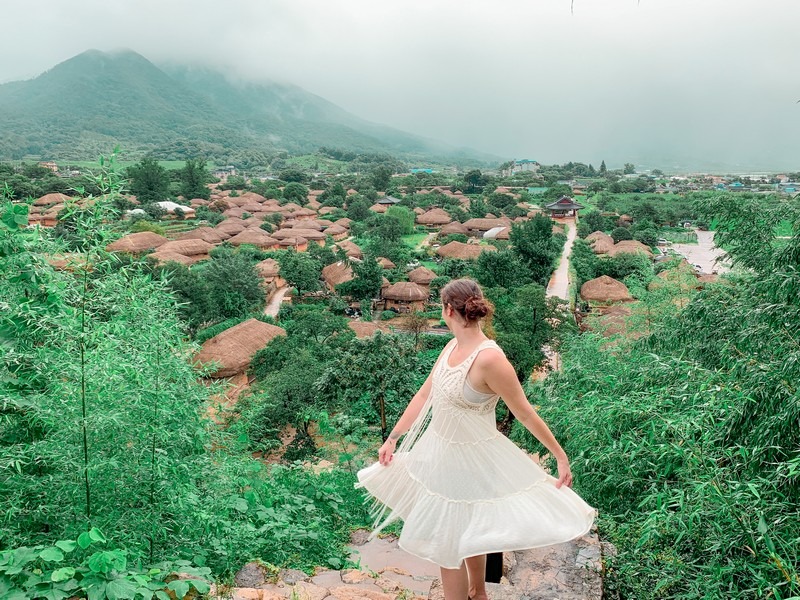
Plan your trip to Nagan Folk Village:
- Basic Info
- How To Get There
- Where To Stay
- The History of Naganeubseong Folk Village
- What To See In The Village Today
- What To Do
- What To Eat
(This post contains affiliate links, which means I receive a certain percentage of a sale if you purchase after clicking at no cost to you. Thank you for your support.)
Basic Info
Hours: November – January: 9:00am ~ 5:30pm; February – April & October: 9:00am ~ 6:00pm; May – September: 8:30am ~ 6:30pm
Admission: Adults: W4,000; Teenagers: W2,500; Children: W1,500
How To Get There
Address: 30 Chungmin-gil, Suncheon-si, Jeollanam-do (전라남도 순천시 낙안면 충민길 30)
By Train: You can take the KTX train from Seoul to Suncheon Station and from there, the folk village is just a 45 minute ride on bus 68 which can be found right outside of the station. This route would take about 4.5 hours in total and is the fastest option.
By Bus: From Central City Bus Terminal in Seoul, you can take an intercity bus to Suncheon Bus Terminal and then take bus 63 just outside of the bus terminal for 40 minutes to get to the folk village. This route would take about 5.5 hours in total.
Where To Stay
MyeongGa Hanok Pension (명가한옥펜션)
Just a fifteen minute walk from the folk village, or a three minute drive, this updated Hanok pension is a great place to stay if you want to enjoy the traditional area, but with some updated amenities. I love staying in Hanoks for a night or so. They’re comfortable enough for that if you’ve never stayed in one before.
You can book a stay here on Booking.com or on Agoda.com
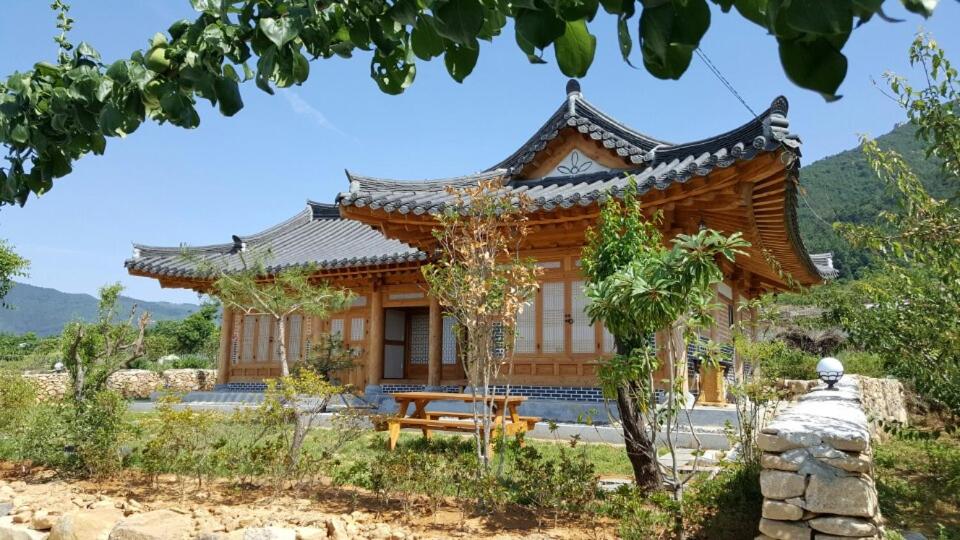


The History Of Naganeubseong Folk Village
The site of the village has been inhabited since the beginning of the first millennia and became a fortress village in the early 10th century during the Goryeo Dynasty. The Joeollanam-do province was and is an extremely fertile area and so it was often the target of invasion and prone to attacks prompting the need for a fortress town.
The village began to really flourish in the late 1300s during the Joseon Dynasty when there were more than 330 fortress towns across the Korean peninsula. During the Japanese occupation, most of these fortress towns were destroyed or dismantled but somehow Naganeubseong remained untouched and intact. You can check out other recommended folk villages to see in Korea here.
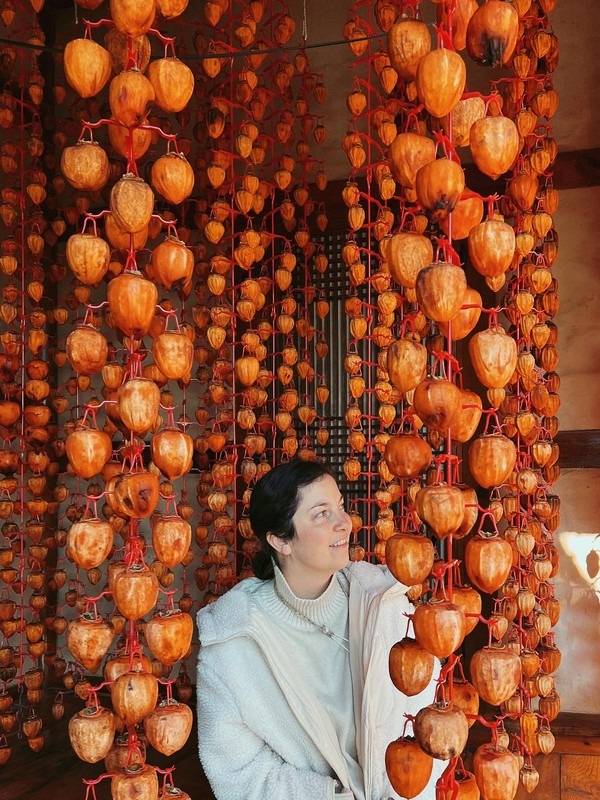
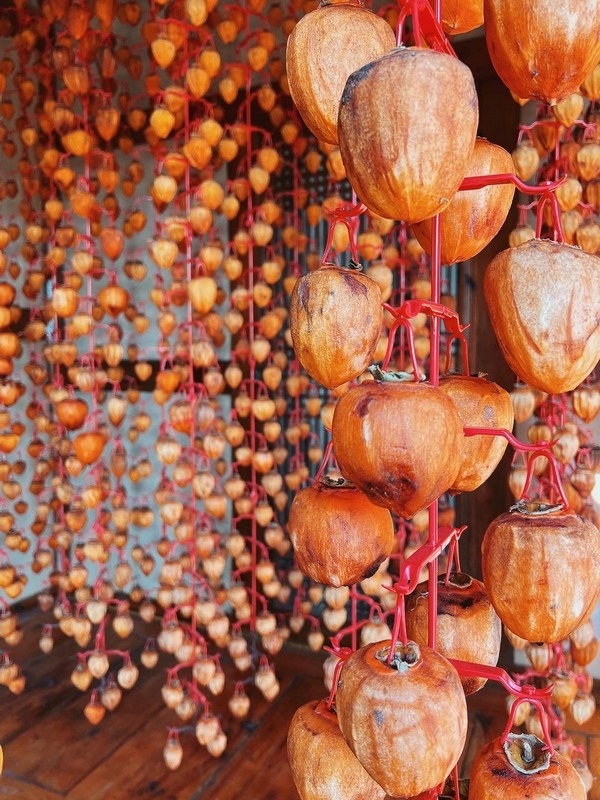
What To See In The Village Today
Nagan means ‘a place of joy and comfort’ and is a place where Korean history and present day life coexists in a unique harmony found in few places on the peninsula today.
Today, there are 231 houses here that are still in their original condition with thatched roofs, mortar free stone work, no plumbing, and living spaces that are much smaller than the average home today. And what is especially unique about the village is that not only are the homes in their original state, but there are actual residents that occupy the homes and still live a very traditional lifestyle.
In fact, on this last trip to the folk village in the autumn, I noticed that they were re-thatching the homes. There were piles and piles of straw that had been harvested and residents were working to rethatch their roofs before the winter. Every year, the roof needs to be re-thatched and the residents take on this task as well as sweeping the unpaved roads, and other homely jobs that people today don’t even consider anymore.
The town became an UNESCO World Heritage site in 2011 and while still very residential, offers a lot to tourists to Suncheon.
What To Do
I visited in both the summer during monsoon rains and the autumn which is why the pictures in this post vary rather dramatically. It’s a sight to behold in every season though. Even in the rain, it was impressive. Very much a living museum, there are experiences and activities to enjoy while learning about history in Korea and enjoying the surrounding views. Here’s how to enjoy Naganeubseong to the fullest.
Walk Along The Top Of The Fortress Wall
I’ve already mentioned quite a few unique aspects of this folk village, but yet another one is that you can actually walk on the top of the fortress wall. Walk along the top and get a beautiful view out over the rooftops covered in straw.
The hanoks in this village are called chogajib (초가집). They were much more common in the past though most visitors to Korea might think the tiled roof traditional houses were more common. Actually those were more expensive and generally for the upper class or scholarly class of Koreans.

The straw roof homes that you’ll see here, though rare today, were very common historically. And if you walk on the wall, you can see them beautifully displayed.
As soon as you enter through the east gate (where everyone enters from), look right and you’ll find a staircase that goes up to the pavilion on top of the gate and from there you can walk along the wall.
Find The Observatory View

Continue along the wall to find the observatory which offers a dramatic and gorgeous view out over the village and to the mountains beyond. This viewpoint is number 11 on the map they provide with the stops you should see and is the prettiest photo-op spots if you want to get the traditional village in the background. This is the only point on the wall with major steps of any kind so if you’re looking for an easy walk, this definitely is one. Only a few stairs up/down to be aware of.
Remember, the homes are still residences, so get the map to know which ones host experiences, food, etc.


Stop Into A Workshop
Walk around the village to find various houses that host workshops from the blacksmith, to straw crafts, paper art, silkworm breeding, fabric dying, and so on. We stopped into a few and they were very welcoming and kind. The experiences may cost a bit of money so take some cash.

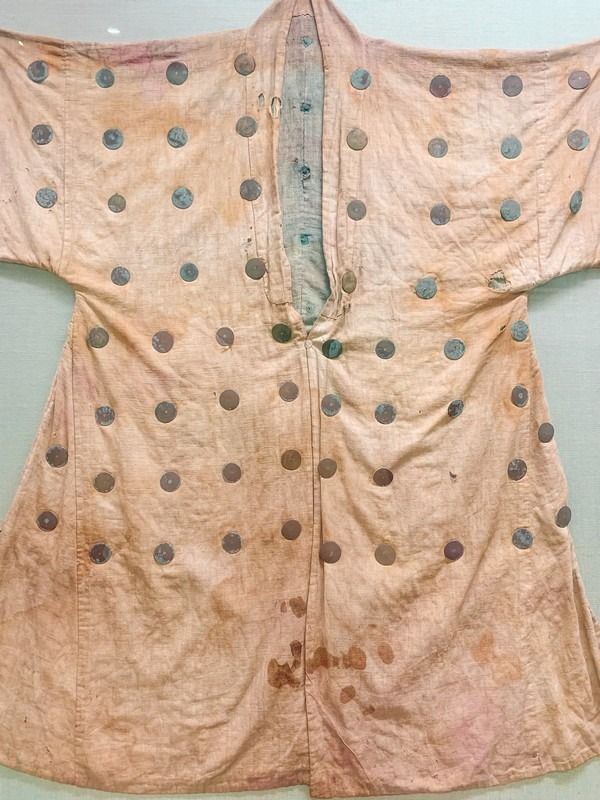

Visit the Nangminggwan Folk Exhibition Hall
If you want to see some of the historical artifacts and relics, then stop in here. All of the information is in Korean, but great things to see inside. My favorite part was the mock representation of a giant tug-of-war. Just wait until you see how giant a traditional Korean tug-of-war was. Squid Game should have kept the tug-of-war game traditional if you ask me.

Enjoy The Views At The Lotus Pond
This is one you should do mostly when it’s warm and there are lotus filling the pond. In the autumn, it’s not so beautiful. But if you’re there in the warmer months, you’ll like the view, I’m sure of it. Take a seat on the nearby steps and just enjoy the calm and quiet surroundings of this historical village.



Find The Traditional Government Buildings
On the northern end of the grounds, there aren’t the thatched roof homes seen everywhere else, but you’ll find buildings that are more akin to the traditional buildings you see elsewhere in the country. The tiled roof pavilions and colorful paint adorn the Nakmin-nu Pavillion, Village School, Old Governmental Office, and Guest House. Step through the gates to see the, somewhat awkward but always humorous, figures and statues that are meant to display what a day in the life looked like.
Play A Traditional Game
No traditional folk village is complete without traditional games. Near the guest house there are hoola-hoops, a giant wooden swing, and other things to play some traditional Korean games.
What To Eat
There is a strip of restaurants just outside of the folk village but there is also a restaurant inside too. What’s the difference? Mostly what’s available to eat. Both times I went, we ate outside before we entered the village, but having seen what was available inside, the next time I go, we’re definitely eating inside.

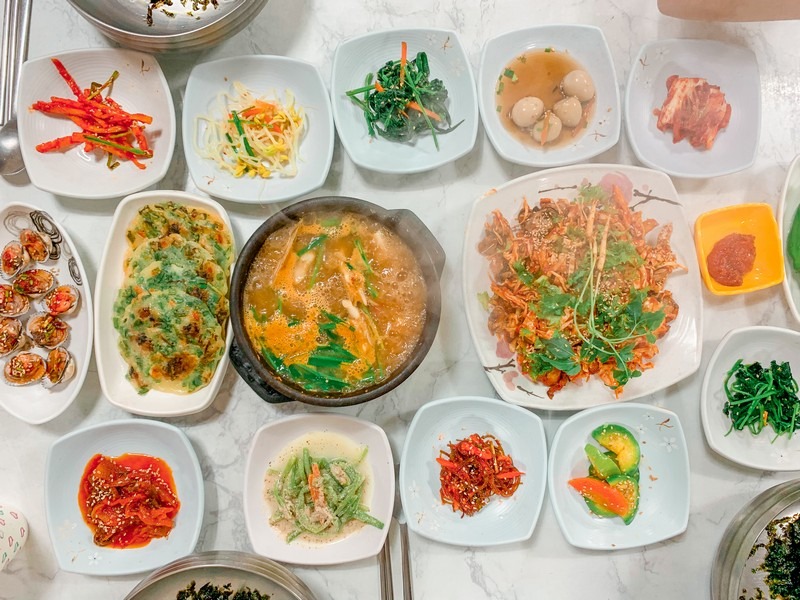
Mihyang Restaurant (미향식당) & Wonjo (원조꼬막맛집)
On the main road heading to Naganeubseong, there are a number of restaurants that all seem to serve about the same thing. They focus on cockles which aren’t really my favorite, but they also serve up a ton of delicious side dishes. Be prepared for seafood though if you go this route.

Naganeubseong Restaurants
Inside of the folk village, the options are a bit more basic and easier for foreigners to eat in my experience with bibimbap, various noodle soups, and vegetable pancakes, though they do also have some of those cockle specialties that the area seems to be popular for.
If you haven’t made it to Suncheon yet, or did and missed this, get to planning now so you can see everything there is to see!
Did you like this post? Pin IT!
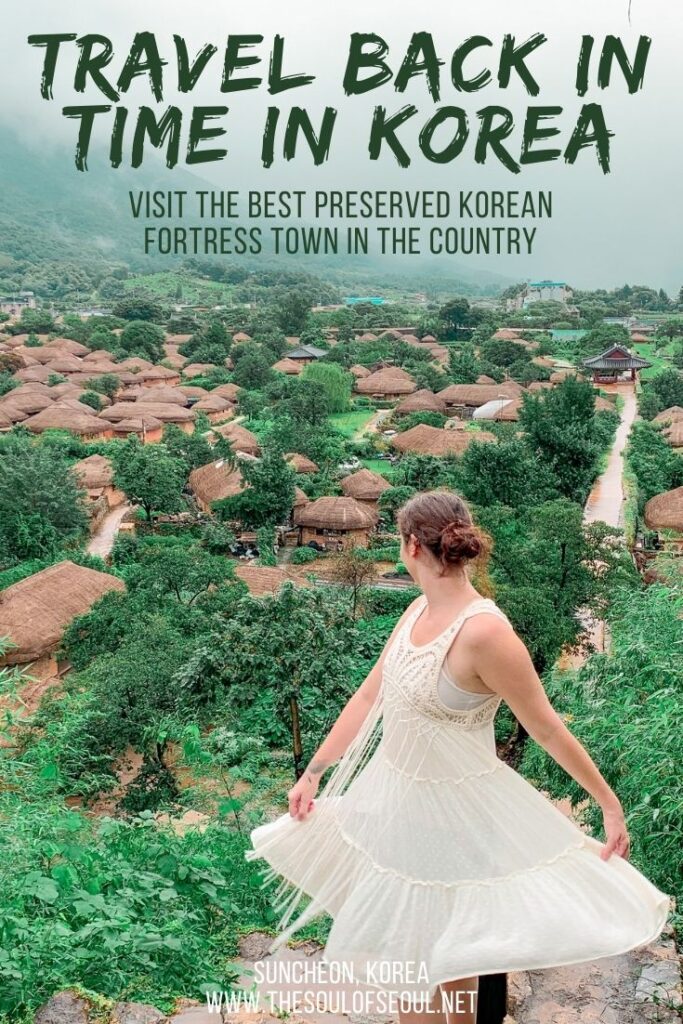
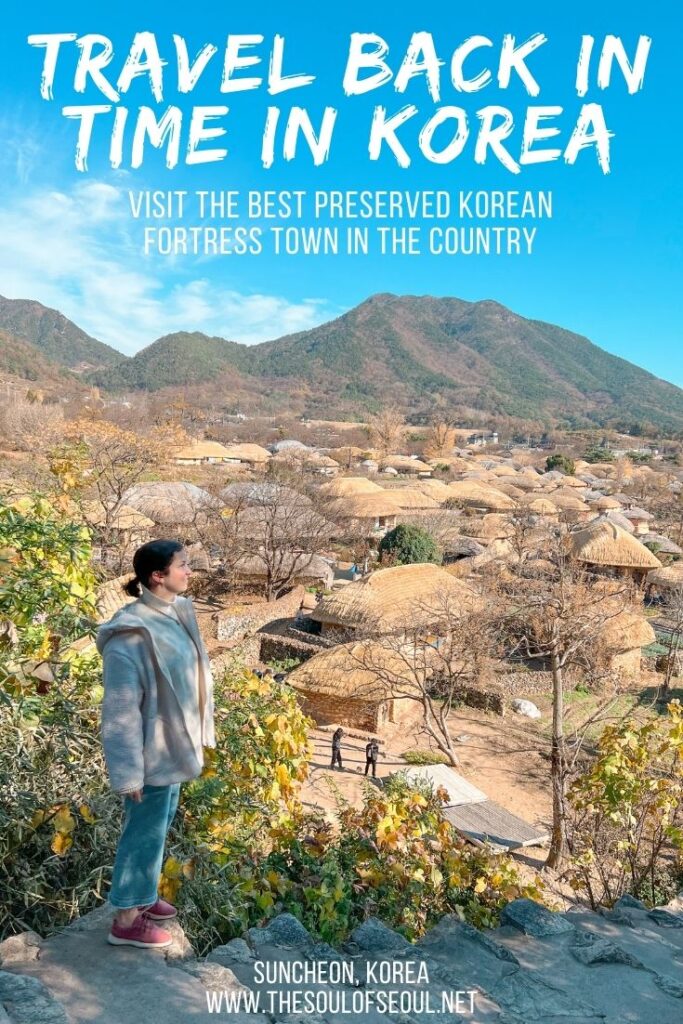


4 Comments
Bell
Hi Hallie, lovely website. May I ask if it is easy to drive around Jeollanamdo? We are thinking of renting a car from Busan to drive to Suncheon and surrounding areas for a few days. Thank you.
Hallie Bradley
Honestly, I think that’s the best way to travel in the Jeolla region. The roads are nice and open and you’ll definitely see a lot more if you have a car.
Jacqueline LAU
Hi there, how do you get to jeollanam-do folk village ? The hanok website you shared are all in Korean 🙁
I’m taking my 86 year old grandma there in April!.
Hallie Bradley
If you look in the above “How To Get There” section, there is directions and bus numbers to use.